Contents
- Key Takeaways
- Importance of Proper Battery Charging for Robot Vacuums
- Types of Batteries Used in Robot Vacuums
- How to Charge Your Robot Vacuum Correctly
- Choosing the Right Charging Dock
- Advanced Charging Features
- Maximizing Battery Life
- Common Charging Issues and Solutions
- Safety Precautions When Charging Robot Vacuums
- Best Practices for Battery Maintenance
- Comparing Battery Performance Across Models
- Future Trends in Robot Vacuum Charging Technology
- Summary
- Frequently Asked Questions
How can you charge your robot vacuum effectively? You’ve found the right guide. This article covers essential tips and key features for charging and maintaining your robot vacuum’s battery for optimal performance and longevity, while also exploring the innovative features that highlight the advanced technology and functionality of modern robot vacuums.
Key Takeaways
-
Proper charging routines are crucial for maximizing the performance and lifespan of robot vacuum batteries.
-
Understanding the differences between Lithium-ion and Nickel-metal hydride batteries can help you manage maintenance effectively.
-
Choosing the right charging dock and employing advanced charging features enhances the convenience and efficiency of robot vacuums.
Importance of Proper Battery Charging for Robot Vacuums
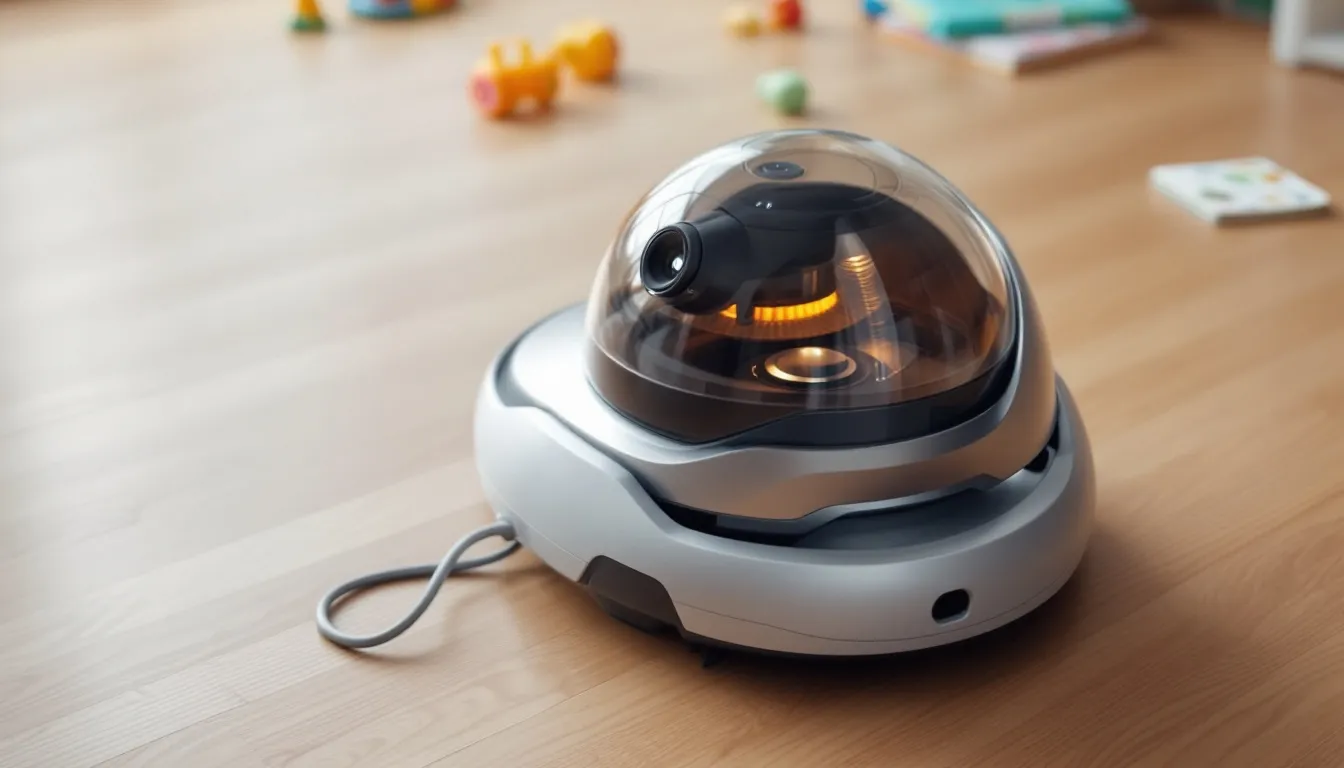
Ensuring that the batteries of your robot vacuum are charged appropriately is crucial for optimal performance and longevity. Adhering to proper charging procedures can help maintain battery life and efficiency, which in turn allows your robot vac to operate effectively over an extended period. Imagine the inconvenience when the best robot vacuum you own depletes its power halfway through a clean – it’s both annoying and disruptive. Proper battery charging ensures that the robot vacuum can complete a full cleaning session without interruptions and ensures effective cleaning on both hard floors and carpets.
Some models come with rapid charging technology, allowing their batteries to regain power more quickly, thereby boosting overall productivity by minimizing pause times between cleans. This feature proves especially valuable in busy homes or spaces where pet hair accumulates rapidly. Advanced mopping features in robot vacuums include electronic water flow control and vibrating mop pads, enhancing their ability to tackle stubborn stains and deliver a more thorough clean. Many of the latest robot vacuums also feature self-emptying docks that automatically empty the vacuum’s dustbin, reducing the need for frequent manual intervention. By regularly and properly recharging your robot vacuum’s batteries, you can significantly extend their useful life — this is tantamount to providing loving care for your cleaning machine. The efficiency of standard mode in extending battery life during cleaning sessions on hard floors is also noteworthy. Advanced features like automatic carpet detection and carpet boost settings enhance cleaning performance on carpets.
In today’s market, numerous bots boast a plethora of capabilities. All these additional perks amount to little if the battery care is neglected. Take the Roomba combo as an example: renowned for its dual-action cleaning ability but heavily dependent on robust battery health so it can effortlessly switch from sucking up debris to mopping floors without interruption.
The essence of routine and correct battery management cannot be overstated when looking to maximize utility from your robotic vacuums. It guarantees that they remain prepared at all times for any messy situation thrown their way—becoming an indispensable tool in keeping one’s living space immaculate.
Types of Batteries Used in Robot Vacuums
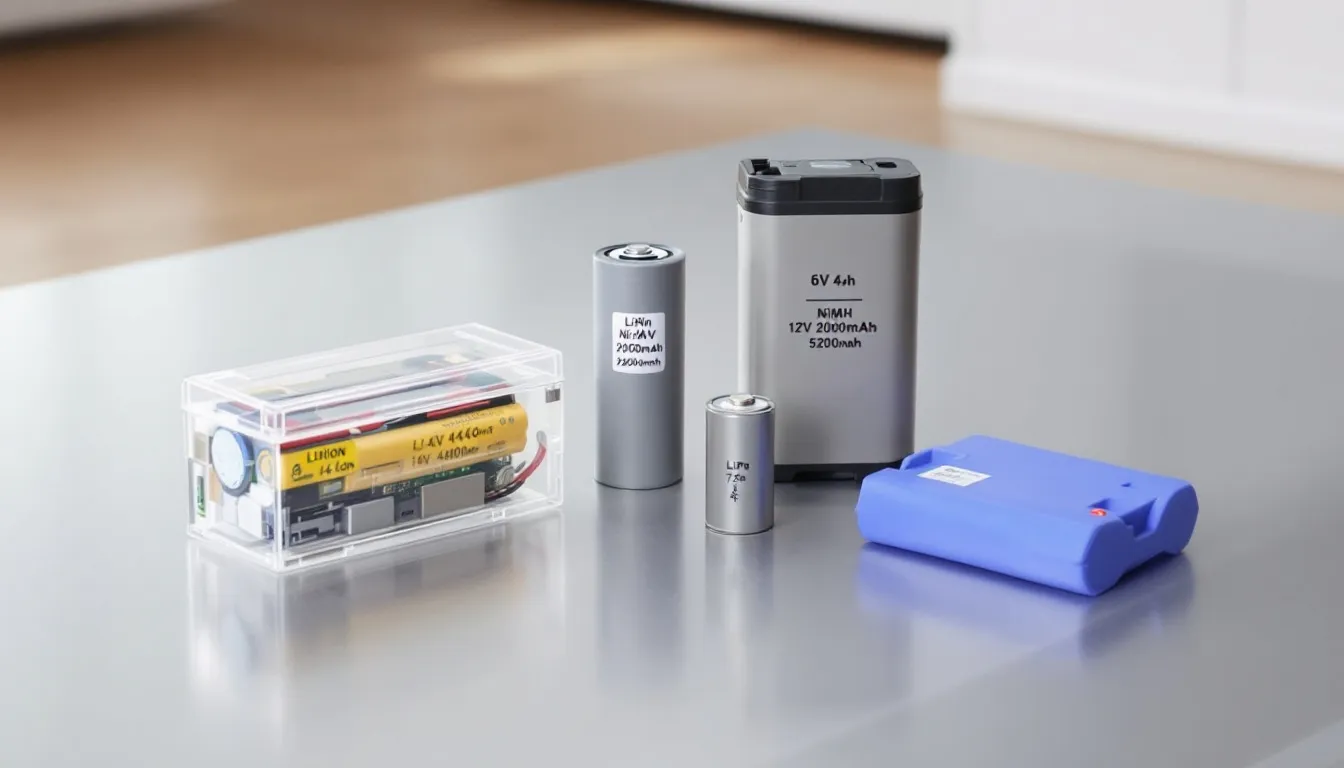
The two primary battery types utilized in robot vacuums are lithium-ion (Li-ion) and nickel-metal hydride (NiMH). Each variety has distinct attributes that influence the frequency and effectiveness of charging your robot vac. Comprehending these variations is essential when managing the upkeep of your vacuum.
Most modern robot vacuums favor lithium-ion batteries because they’re light, possess a greater energy capacity, and offer an extended service life. This type enables your robotic cleaner to operate for longer periods on one charge, which can be beneficial for extensive residences or settings demanding regular cleaning sessions. Additionally, some advanced robot vacuums come with self refilling water tanks, which enhance their mopping efficiency and reduce the need for frequent manual intervention. These features make them a top choice for leading-edge robot vacuum models.
Conversely, Nickel-metal hydride batteries are typically found within earlier generation robots due to their weightier design and reduced longevity, but have been recognized for being more eco-friendly options. For consumers prioritizing environmental factors, this could sway their preference even if it means compromising on operation time compared with Li-ion-powered devices.
Your decision between lithium-ion or nickel-metal hydride power sources will impact how effectively and efficiently you use your automated cleaning assistant. Awareness of what kind of battery powers up your machine helps tailor appropriate charging habits as well as maintenance routines to maximize its lifespan — thus ensuring maximum value from this convenient home-cleaning technology.
How to Charge Your Robot Vacuum Correctly
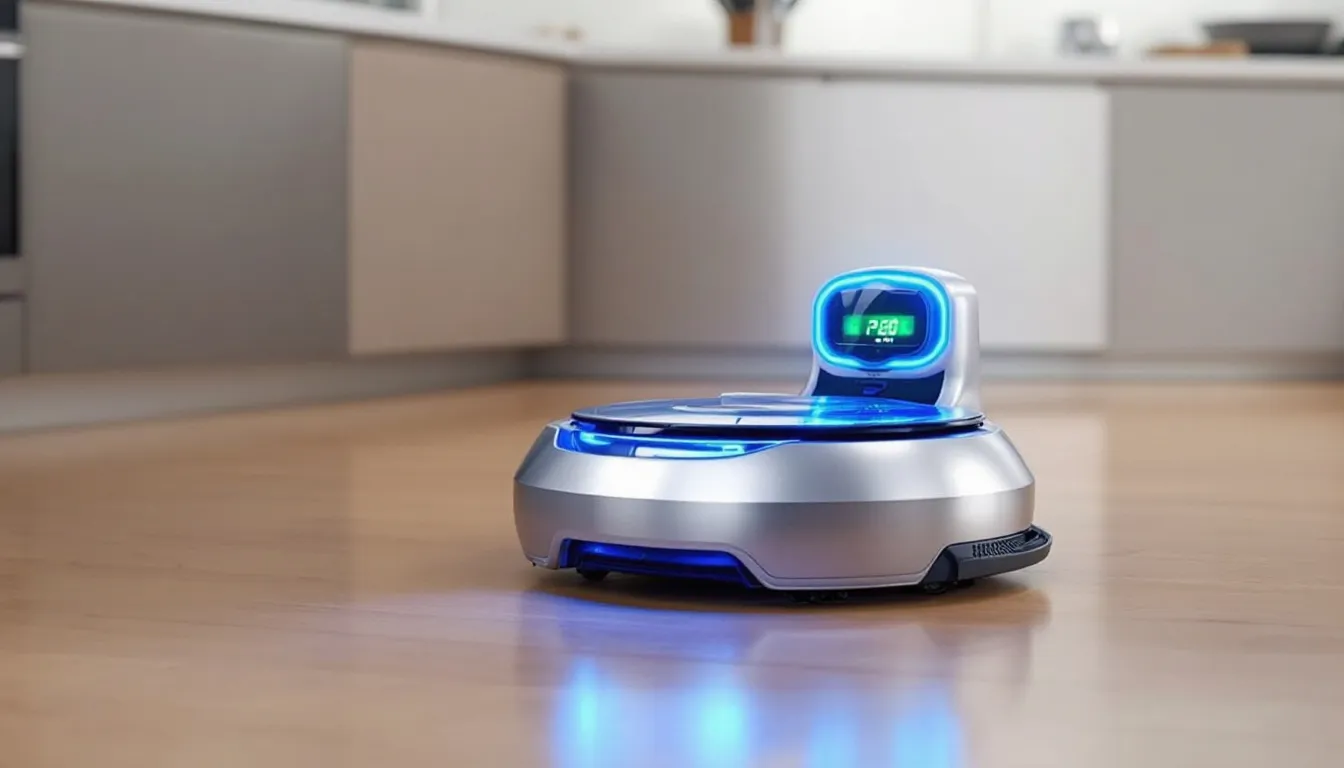
To ensure the longevity and peak functioning of your robot vacuum, it’s crucial to charge it correctly. Before you initiate the initial charging process, make sure that the robot is switched off to avoid malfunctions and promote a strong battery life.
When placing your vacuum on its charging dock, take care to align the connectors properly for a solid connection essential for effective charging. If opting for manual charging instead of using a dock, connect directly to an electrical outlet with careful attention so that not always easy issues can arise without meticulousness. Ensuring the bot’s bin is properly emptied and using a disposable bag can enhance the vacuum’s efficiency and reduce maintenance efforts. Advanced docking stations with auto emptying features further simplify maintenance by automatically emptying the dustbin into larger bags, offering a hands-free cleaning experience.
For owners of advanced units like the Roomba combo which handle both vacuuming and mopping tasks, adhering strictly to these instructions ensures that your device transitions smoothly between its functions. It’s particularly critical for such complex robots with multiple capabilities—including their integrated mops—to be well-charged in order to operate at full potential. Strong suction is also vital for effective cleaning, especially on carpets, enhancing the overall performance of the device.
Investing just a bit more time into proper charger setup could spare you future complications—a worthwhile exchange considering how much convenience and cleanliness these robotic assistants add to household maintenance.
Choosing the Right Charging Dock
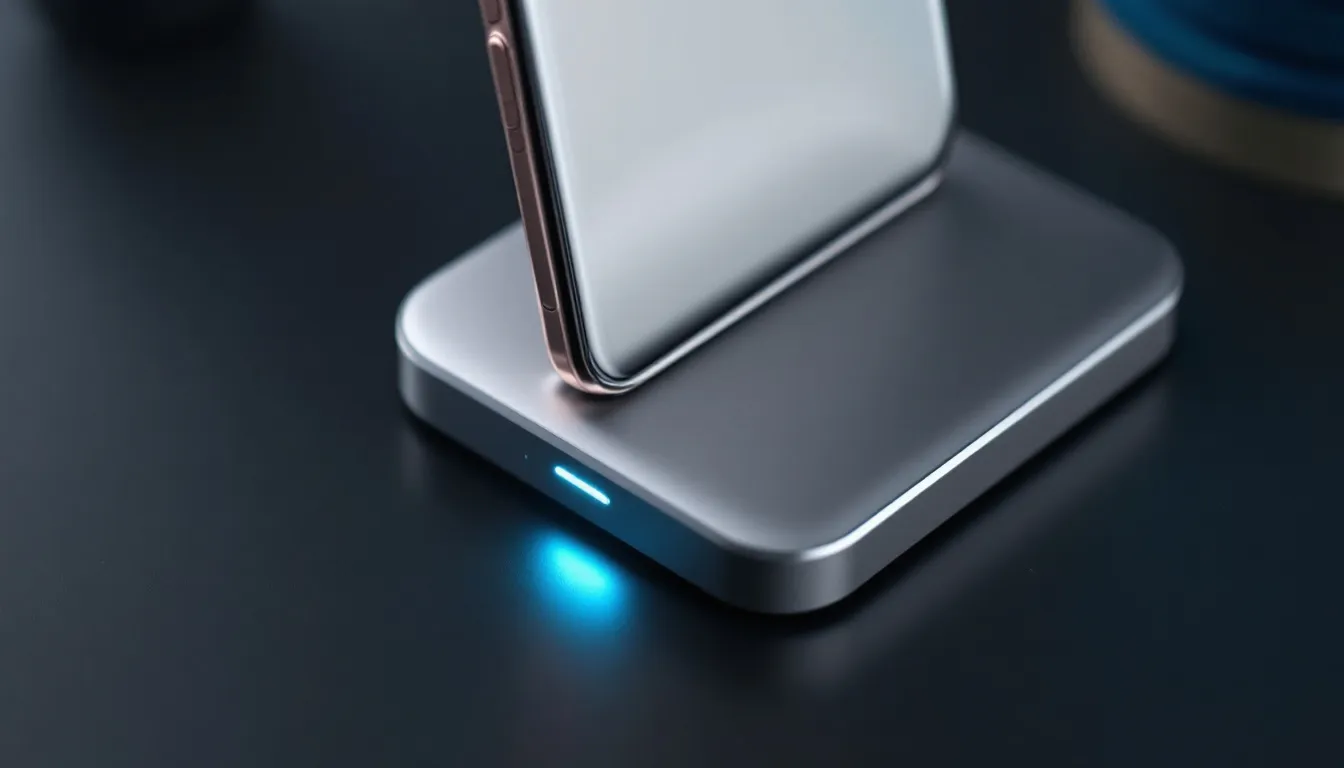
Selecting an appropriate charging dock is crucial for the performance and durability of your robot vacuum. Verify that it’s compatible with your particular model to ensure seamless and trouble-free recharging.
Consider a docking station design that not only fits well in the available space but also provides uncomplicated access for routine maintenance of the robot vacuum. Positioning the dock where there are no obstructions enables easy docking by the vacuum, thereby minimizing disruptions during charging cycles. Look into additional capabilities such as self-emptying mechanisms, automatic refill systems, and features for cleaning mopping pads to enhance overall cleaning efficiency. Advanced docking stations can manage dirty water and self clean, reducing the need for manual maintenance. Additionally, a charging dock that supports effective cleaning of mop edges can significantly improve the vacuum’s ability to clean corners and edges.
The future holds promise with wireless charging technology expected to revolutionize how we use robot vacuums – potentially enabling them to recharge without any physical connection. Many high-end robot vacuums use LiDAR sensors or advanced cameras for navigation, allowing them to map spaces with precision and clean more efficiently. Additionally, robot vacuums are increasingly incorporating AI for obstacle detection, improving their navigation capabilities. This cutting-edge advancement could remove traditional docks entirely, simplifying the recharging process even further. Moreover, having access to a wide range of replacement parts, including brushes, battery packs, and motors, can enhance the longevity and usability of your robot vacuum.
In summary, choosing an ideal charging dock involves more than just finding a place where your vacuum can rest. It means ensuring proper fitment with your device while maximizing convenience through advanced functionalities designed to streamline and simplify every aspect of your home-cleaning regimen. The average suction power for top-tier robot vacuums ranges from 10,000Pa to 22,000Pa, enhancing their cleaning effectiveness on various surfaces.
Advanced Charging Features
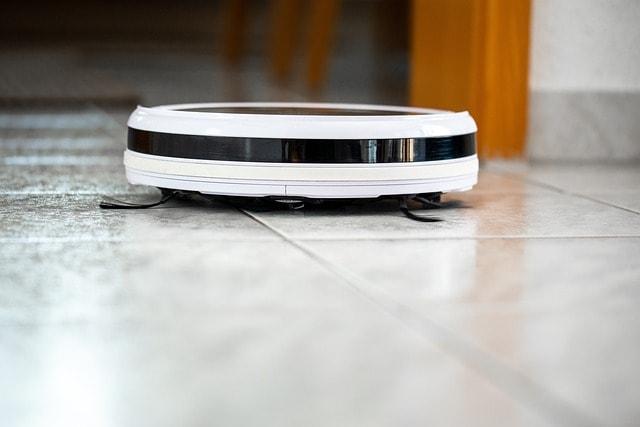
The introduction of advanced charging features has transformed the way robot vacuums facilitate home cleaning. Innovative technologies like auto-docking permit the vacuum to autonomously return and recharge at its dock when its battery life is running low, ensuring that it’s consistently prepared for subsequent cleaning sessions without any need for human involvement. Compared to previous versions, the latest models offer faster charging times and enhanced automation capabilities, making maintenance easier and more efficient. Most premium robot vacuums provide customizable cleaning settings through an app, allowing users to manage schedules and preferences with ease.
Many high-end charging docks are equipped with self-cleaning abilities that enable the vacuum to expel gathered dust and debris on its own. This functionality is pivotal for those seeking an authentic hands-free clean-up experience. For example, models such as Yeedi S14+ come with a range of convenient functions including self-emptying, hot-water mop washing, hot air drying, and automated dust disposal. Some advanced models also feature auto detergent dispensing and hot water washing, which enhance cleaning efficiency and reduce maintenance efforts. Many high-end robot vacuums offer self-cleaning and automated emptying docks, further reducing the need for manual intervention and enhancing user convenience. These features help the robot vacuum efficiently complete its cleaning job, ensuring thorough multi-room coverage without constant human intervention.
Integration capabilities with smart home ecosystems provide users with the convenience of operating their robot vacuums via voice commands using platforms such as Amazon Alexa or Google Home. Imagine directing your robotic cleaner to initiate cleaning while you’re away from home simply through spoken instructions. Many robot vacuums now offer integration with smart home systems like Amazon Alexa and Google Assistant, making it easier than ever to incorporate these devices into your daily routine. Devices like Dreame X40 Master and Roborock Qrevo Curv feature cutting-edge options which include automatic refills, drainage systems, and mechanisms for self-cleaning – enhancing their overall productivity.
By embracing these state-of-the-art charging functionalities, not only do they ease daily routines, but also ensure optimum performance from your robotic vacuum cleaner. Investing in one bearing these technological advancements can result in significant savings of both time and labor over prolonged use periods.
Maximizing Battery Life
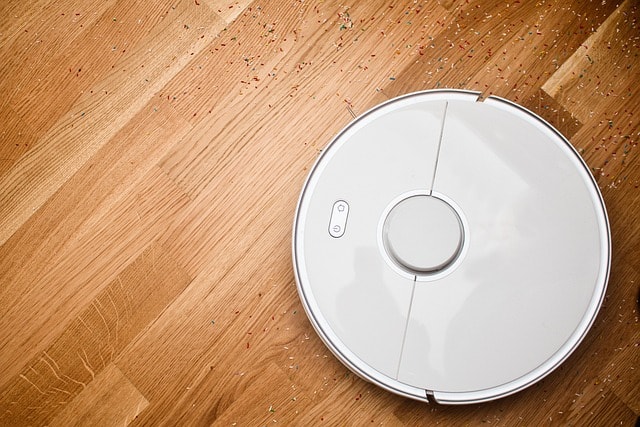
To prolong the lifespan of your robot vacuum’s battery, it is essential to adopt correct charging practices, maintain a consistent maintenance schedule, and use the device intelligently. Once the battery reaches full charge, refrain from leaving the vacuum on its docking station indefinitely to prevent overcharging that could lead to decreased efficiency in the long run. Proper battery maintenance is crucial for vacuum and mop functionalities, ensuring these advanced devices operate efficiently. This also ensures the vacuum can effectively pick up cat litter and clean high pile rugs.
It is recommended not to wait until the battery is completely drained before recharging it—this holds especially true for lithium-ion batteries. Using your robot regularly can help maintain an active and healthy battery life by preventing rapid degradation. Keep your vacuum stored in a cool and dry area to avoid potential heat damage affecting its battery. Hybrid models, with their advanced features, can also help in maintaining battery life by optimizing energy use during both vacuuming and mopping tasks.
Maintaining cleanliness with regards to their brushes—including side brushes—filters, and sensors periodically will bolster overall cleaning performance while lessening stress on the batteries. Regularly updating a precise cleaning map ensures that only necessary areas are targeted for cleaning: more trafficked spots should be cleaned often. While rooms utilized sparingly require less frequent attention—all benefiting effective energy consumption. Ensuring that any brush or side brush stays intact Elevates its capacity for thorough cleans.
Adhering rigorously to these strategies offers great promise in extending your robot vacuum’s serviceable life as a dependable aid within household upkeep endeavors across subsequent years.
Common Charging Issues and Solutions

Common charging issues often arise from connectivity problems. Here are some key points to consider.
-
If the charging dock malfunctions, it can prevent the vacuum from charging, necessitating an inspection.
-
Compatibility checks are crucial for resolving these connectivity problems.
-
Damage checks should also be performed to ensure everything is functioning properly.
Choosing the best robot vacuums can help avoid common charging issues, as they often come with more reliable components and better customer support.
By addressing these issues, you can help ensure your vacuum charges effectively.
One common issue is the charging cable or dock not being securely connected. This can lead to incomplete charging cycles and reduced battery life. Regularly inspect the dock and connectors for any signs of wear and tear. Hair tangles and dirt on the connectors can also impede proper charging, so keep these areas clean.
Another issue is the vacuum not docking properly. Ensure that the dock is placed in an accessible location free from obstacles. Sometimes, the problem may lie in the vacuum’s software. Updating the firmware can resolve bugs that affect charging efficiency. Advanced navigation features in the best robot vacuums help them avoid obstacles and dock correctly.
Addressing these common issues proactively helps maintain your robot vacuum’s performance and extend its battery life. Regular inspections and maintenance ensure efficient charging and readiness for use.
Safety Precautions When Charging Robot Vacuums

Ensuring safety is critical when powering up robot vacuums. It’s important to use the charger that comes with your vacuum to prevent risks and ensure compatibility, as chargers not designed for your model could lead to overheating or damage to the battery.
To protect against electrical harm, keep your robot vacuums dry and never submerge them in any liquid. Conducting routine inspections of both the charging unit and electrical outlet for signs of wear or damage like scorch marks or strange noises is crucial in preemptively recognizing potential dangers. Advanced models can navigate around pet bowls, reducing the risk of accidents during charging.
It is advisable to utilize a charging dock equipped with residual current device (RCD) protection as an added safeguard against electric shock. It’s wise not to place the robot near sources of heat or operate it where open flames are present—these measures help maintain both personal safety and property while ensuring proper charging occurs. Using quiet mode can help maintain a safe and peaceful environment while the vacuum is charging.
Adhering strictly to these recommended safety measures assists in averting mishaps, allowing your robot vacuum uninterrupted service on its quest across floors unencumbered by obstacles, while securely recharging its battery at its designated dock.
Best Practices for Battery Maintenance
It is crucial to adhere to proper charging techniques in order to extend the life of a battery. Both overcharging and insufficient charging can negatively impact the robot vacuum’s performance. Ensuring that the lithium-ion battery goes through complete charge and discharge cycles from time to time helps in preserving its condition. Proper battery maintenance is essential for effective cleaning on hardwood floors, ensuring the vacuum can handle different surfaces efficiently. Regularly replacing the dust bag and washing the mop pads can also help maintain the vacuum’s performance and battery life.
For optimal storage, it is advised that you charge your robot vacuums up to about half their capacity and store them in an environment that is both cool and dry when not using them for significant periods. It’s imperative to avoid exposing the robot vacuum’s batteries to harsh temperatures, as doing so will aid in sustaining both their efficiency and lifespan. Vigilance regarding signs like diminished operational times or increased durations required for charging may indicate a need for timely repairs or even substitution of batteries. Maintaining battery life is also crucial for cleaning large areas without frequent interruptions.
Dirt accumulating on contact points meant for charging can often be accountable for malfunctions associated with reenergizing these devices. Such interruptions could prevent successful energy transfer during charges. Worn-out or damaged batteries might result in similar challenges since they tend not to hold power adequately anymore. Utilization of chargers provided by manufacturers at purchase should be prioritized because mismatched ones pose risks detrimental to battery integrity.
By observing these guidelines conscientiously, you help ensure longevity for your robot vacuum’s power source, which translates into dependable utility over many years ahead.
Comparing Battery Performance Across Models
Examining the battery capabilities across various robot vacuum models can aid in selecting the most suitable one for your requirements. Robot vacuums equipped with high-quality lithium batteries endure around 500 complete charge cycles before their performance begins to wane, which is vital for users who depend extensively on their robot vacuums. Maintaining the mop pad is crucial for optimal battery performance, as a clean mop pad ensures efficient operation. Robot vacuums with advanced mapping can create efficient cleaning routes by learning the layout of a home, ensuring thorough coverage and optimized cleaning paths. Many bots offer features like cleaning specific rooms, which can impact battery performance and efficiency.
On a single battery charge, premium robot vacuums deliver runtimes between 180 and 240 minutes, allowing them to handle lengthy cleaning operations efficiently. For example, the Roborock Q7 M5 demonstrates an average mid-tier endurance by operating up to 150 minutes per charge. Conversely, the Ecovacs Deebot X5 Pro Omni stands out with its extraordinary ability to run for up to 350 minutes when fully charged – a testament to exceptional battery efficiency. The availability of replacement parts, such as brushes and battery packs, is essential for maintaining this battery performance over time.
With advancements in battery technologies leading to higher-energy-density lithium batteries, we anticipate longer usage durations from our robot vacuum devices that will facilitate more thorough cleanings without necessitating constant recharging.
By grasping these differences in battery life among models you are considering how they meet your specific cleaning demands through informed decision-making about which robotic vacuum aligns best with those needs.
Future Trends in Robot Vacuum Charging Technology

Anticipated developments in the charging technology for robot vacuums are quite exciting, with a variety of improvements expected soon. Enhanced models boast suction powers reaching up to 18,500 Pa, greatly elevating their cleaning capabilities and battery efficiency. Consequently, users will experience more robust and proficient cleaning cycles. Additionally, smart home integration will play a significant role in future models, allowing seamless connectivity with systems like Amazon Alexa and Google Assistant for enhanced control and convenience. Future models may also include RGB cameras for enhanced obstacle detection and cleaning performance.
Several top-tier robot vacuums now incorporate sophisticated navigation systems that enable them to cover vast expanses methodically while conserving power. The upcoming incorporation of 5G tech is anticipated to expand upon the remote control functions and data exchange features of these robots, boosting their adeptness at navigating intricate environments. Premium robot vacuums can provide multi-level mapping for accurate navigation in multi-story homes. Moreover, advancements in fine dust filtration technology, particularly with HEPA filters, will ensure that even the smallest particles are effectively trapped, maintaining a cleaner environment. The Matter protocol will enhance compatibility with smart home ecosystems, improving overall convenience and functionality.
Future advancements promise a leap in how efficiently these machines clean and manage their batteries. Features such as automatic detergent distribution systems that self-empty, coupled with seamless integration into smart homes through voice command technologies, are poised to make user interaction more streamlined than ever before.
The trajectory for robot vacuum charging innovation is set towards an increasingly effective and hassle-free future. Numerous breakthroughs await which aim to optimize both functionality and convenience for these automated devices.
Summary
Proper care and charging of robot vacuum batteries are essential for maintaining their peak performance and extending their service life. From comprehending the significance of correct charging techniques to choosing an appropriate charging dock, as well as utilizing advanced features, each aspect is critical in preserving your robot vacuum’s efficiency. Additionally, different cleaning modes enhance the versatility and effectiveness of robot vacuums, allowing users to optimize cleaning performance based on specific needs and surfaces.
We delved into the varying battery types utilized in robot vacuums, emphasizing both advantages and disadvantages of lithium-ion and Nickel-metal hydride options. Recognizing these distinctions aids in implementing optimal practices for battery charging and upkeep. Progressive features like automatic docking, self-emptying capabilities, and smart home compatibility greatly increase the convenience factor when managing these appliances. The integration with voice assistants, such as Alexa and Google Home, further simplifies the management of robot vacuums, reflecting the growing importance of smart home compatibility. Some top pick models can create and store up to four maps, enhancing their cleaning efficiency and performance.
To prolong battery life effectively involves engaging in proper charge routines, consistent maintenance checks, plus wise operational tactics. Tackling typical issues associated with charging while observing necessary safety guidelines ensures that your vacuum charges thoroughly yet remains secure at all times. Evaluating how different models’ batteries perform can guide you towards selecting a vacuum that aligns perfectly with your specific needs.
Ultimately, adhering to these recommendations will help guarantee that your robot vacuum continues to be an efficient aid within household cleaning tasks over an extended period. Take measures today toward sustaining your machine’s battery health so you may benefit from a tidier living space effortlessly achieved through this technological helpmate.
Frequently Asked Questions
What type of battery is best for robot vacuums?
Lithium-ion batteries are the best choice for robot vacuums because they are lightweight, have a high energy density, and last longer than other types.
You’ll appreciate the efficiency and longevity they bring to your cleaning routine!
How can I maximize the battery life of my robot vacuum?
To maximize your robot vacuum’s battery life, avoid overcharging and regularly clean the vacuum.
Also, store it in a cool, dry place and try not to let the battery fully deplete before recharging.
What should I do if my robot vacuum isn’t charging properly?
If your robot vacuum isn’t charging properly, first check the charging dock and connectors for any dirt or damage.
Make sure everything is compatible and look for any software updates that could fix the problem.
Are advanced charging features worth the investment?
Absolutely, advanced charging features like auto-docking and self-emptying make your robot vacuum much more convenient and efficient, justifying the investment.
You’ll appreciate the added ease they bring to your cleaning routine!
What safety precautions should I take when charging my robot vacuum?
To keep your robot vacuum safe while charging, always use the supplied charger, avoid moisture and heat sources, and regularly inspect for any damage.
It’s also a smart idea to use a dock with RCD protection for added safety.





